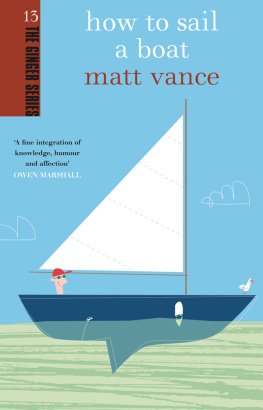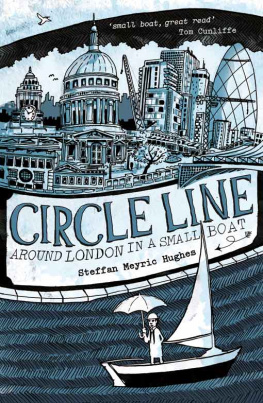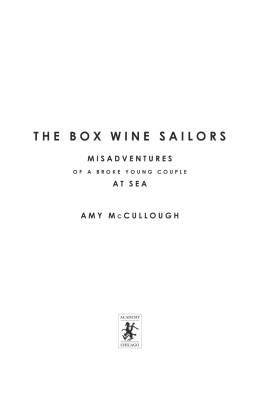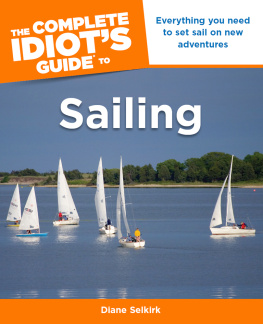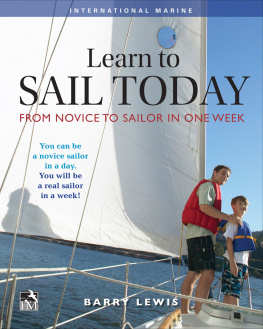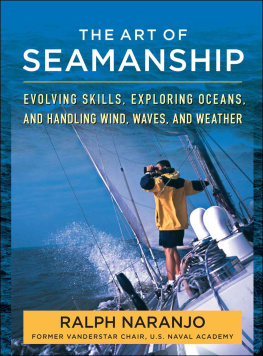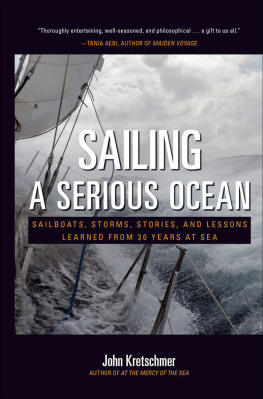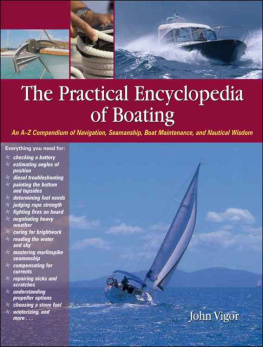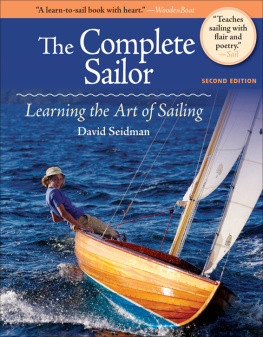THE GINGER SERIES
OTHER TITLES IN THE GINGER SERIES
01 How to Watch a Game of Rugby by Spiro Zavos
02 How to Gaze at the Southern Stars by Richard Hall
03 How to Listen to Pop Music by Nick Bollinger
04 How to Pick a Winner by Mary Mountier
05 How to Drink a Glass of Wine by John Saker
06 How to Catch a Fish by Kevin Ireland
07 How to Look at a Painting by Justin Paton
08 How to Read a Book by Kelly Ana Morey
09 How to Catch a Cricket Match by Harry Ricketts
10 How to Watch a Bird by Steve Braunias
11 How to Hear Classical Music by Davinia Caddy
12 How to Play a Video Game by Pippin Barr
ABOUT THE AUTHOR
MATT VANCE is a New Zealand writer who specialises in sailing stories from the South Pacific, the Southern Ocean and Antarctica. His articles and photographs have appeared in New Zealand Listener , Boating New Zealand and Wilderness . He has sailed and raced extensively throughout the Pacific and has an immodest enthusiasm for his family, an old yacht named Siward , and a motley collection of eccentric friends.
There is poetry of sailing as old as the world.
ANTOINE DE SAINT-EXUPRY
To my family
Landfall
FROM THE SMALL CABIN of Chance I watch the towelling curtains that separate the cabin from the cockpit. Orange, red and yellow tropical fish swim in profile in a blue sea. As the boat rolls the curtain dances, giving the sensation of a real underwater scene.
The cabin is used more for storage than for sleeping: it contains old lifejackets, sails and rope that have become stiff with salt water. It is also where small children like me are stuffed when the sea cuts up rough on the homeward leg of a visit to our favourite island. Through a parting in the curtains I can see my father and his friend David easing the boat through the gusts; part nervous tension, part pure enjoyment is written on their faces.
This is my first memory of the sea and of sailing.
On land Dad and David were teachers, with all the trials of the classroom, the school board and parent-teacher evenings. Out at sea they were under the fleeting illusion of being free, beyond the reach of all that. Under sail, they were confronted with a simple set of rules that required them to observe intently, to engage their entire being in the enterprise of moving across the ocean.
Despite the enormity of their effort, Dad and his friend had little effect on the sea: I could see Chance s wake being quickly zipped up behind, leaving no trace of our passing. The same could not be said of the seas effect on the two men. I could see in their faces the sea subtly unzipping them, pulling out the stuffing that had been buried by life on the land, revealing things about the sailor that only the sea might know.
Chance s wake feathered white on a green sea, before dissolving into the general lopping swell that always accompanied a strong noreasterly. The tension and exhilaration we felt on deck didnt seem to evaporate in the wake. If anything, these feelings were amplified as the swell rebounded around the hull of the boat. The laughs were louder and the lurches seemed scarier than anything on land.
In calm weather, children were allowed out beyond the curtain to roam the cockpit and help trim the sails. On special occasions I would be ushered on to my fathers lap and allowed to steer. My small hands were barely able to grasp the varnished tiller, and Dad would have to use his weight to gently correct my erratic course.
Through the helm I could feel that Chance was alive as every puff of wind was converted into a quivering surge that rushed up my arms. In my fathers lap I was insulated from responsibility: sailing was a game with a warm safety net as Dad reached out his strong hand and dumped power from the mainsail, or hauled the boat back from the violence of an involuntary gybe that had loomed, while I dreamed I might be that seagull over there. It was only when the sea got rough that, with urgent tones, we were corralled into Chance s cabin. Pulling the towelling curtain across the hatch was a sign we were not to venture on deck and mess with the serious job of keeping the boat upright. There was no time for arguing or stalling or all the other stuff we might have tried on land.
While the other kids lolled around on the sail bags and had pillow fights with the spare lifejackets, I was always drawn to what lay beyond the curtains. The thought of what lay out there would give me a queer twisted feeling deep in my guts, accompanied by a dry furry mouth. This was part excitement, part outright fear. It is a feeling I still associate with doing things that make you feel really alive, things that have in them some possibility of catastrophe and a good chance of something better than that.
This feeling was there on the first day I took the helm of my Optimist dinghy, Tigger . It was there for all of the 150 metres I sailed before pulling off a tack and returning to my father on the boat ramp. It was most definitely there when my friends father said, Shes all yours, boys as he swung himself down into the companionway, slid the hatch shut and reclined on his bunk, leaving two nine-year-olds in control of a 40-foot trimaran on the open ocean. It was there when I took off down my first wave in Tigger and at the bottom of the wave when I capsized spectacularly.
It was there on the night before a race when the wind howled in the trees around the house, and on the night before I departed for my first offshore voyage to Tonga.
From the stern of Manaroa III we watched New Zealand vanish. For most of the day it had been a faint smudge behind us, seeming to stick to the horizon until, after making a cup of tea below, I came up to the call of Shes gone. My stomach gave a churn that would become familiar. Departure from the land is a kind of death, and there was a reverent silence from the crew as New Zealand disappeared below the curvature of the Earth. There was nothing for it now. We turned, faced forward and took in the sea.
Among the crew of Manaroa III there was a peculiar mix of skills and talent, bound by the cement of humour and goodwill. Dave and Gwen were dairy farmers. Two years earlier they had sold a chunk of their farm to buy a bare steel hull of Denis Ganley design. Dave had proceeded to fit a tractor engine and weld the hatches closed. He had then issued earmuffs and a beanbag for comfort to each of the crew and motored 800 nautical miles down the coast to his farm, where the rusty hull was hauled out and deposited in his hayshed. Over time Dave and Gwen turned it into a work of art.
Having made our departure we quickly became a nation of five souls in a small speck of the Pacific Ocean. We had immediate concerns, such as changing sails and catching tuna to supplement one of Daves bulls that had ended up in Manaroa III s freezer. Each evening the crew would crowd around the navigation table, listening to the warbling crackle of the single sideband radio presenting a collection of the only news that meant anything: the proximity of other boats and the developments in the weather. Chris, our navigator, would mark our position with a faint pencil cross on the chart. The gaps between marks, barely wider than his cigarette-stained finger, meant 24 hours of sailing. Such is the humbling vastness of the Pacific Ocean.
After a few finger widths across the chart we entered the beginnings of the south-east trade winds, the warm steady breezes that denote life in the tropical Pacific. They meant days of beautiful downwind sailing, with fluffy clouds and squadrons of flying fish fanning out across deep purple water. At night we sailed in T-shirts as spectacular displays of stars wheeled above the mast, matched only by the spectacular displays of phosphorescence that spread out like galaxies in our wake. Day after day we reeled in the land that we hoped lay ahead.
Next page
